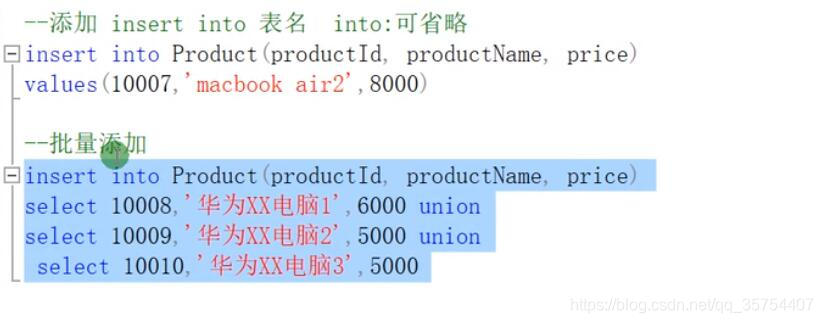SQL Server简单操作
https://www.nowcoder.com/practice/4c8b4a10ca5b44189e411107e1d8bec1
一、
1.增
2.删、改
3.查
4.内联
5.左联、右联
****cast(@id as varchar)强制转换
……..
5.游标
静态游标static 向上(prior)、向下(next)、第一个(first)、最后一个(last)
静态游标可以使用绝对的定位和对定位
fetch absolute 5 from cursor_userinfo into @userid,@username,@telephone….
create创建//alter修改
二、
1.子查询:把一个查询的结果在另一个查询中使用就叫做子查询
select max(hire_date) from employees
select * from employees
where hire_date =
(select max(hire_date) from employees)
2. limit m,n : 表示从第m+1条开始,取n条数据;
limit n : 表示从第0条开始,取n条数据,是limit(0,n)的缩写。
(1)select * from employees order by hire_date desc limit 1
(2)select * from employees order by hire_date desc limit 2,1
(3)select * from employees
where hire_date = select hire_date from employees order by hire_date desc limit 2,1);
3. left join(左连接)返回左表中所有的记录,即使在右表中没有记录
rignt join(右连接)返回右表中所有的记录,即使在左表中没有记录
inner join(内连接)返回两个表中完全匹配的结果集
full join(全连接)只要存在匹配,就返回该行,即是leftjoin和right join
select
salaries.emp_no,
salaries.salary,
salaries.from_date,
salaries.to_date,
dept_manager.dept_no
from salaries
join dept_manager on salaries.emp_no=dept_manager.emp_no
where salaries.to_date='9999-01-01' and dept_manager.to_date='9999-01-01'
4. 注意on与where有什么区别,两个表连接时用on,在使用left jion时,on和where条件的区别如下:
(1)、on条件是在生成临时表时使用的条件,它不管on中的条件是否为真,都会返回左边表中的记录。
(2)、where条件是在临时表生成好后,再对临时表进行过滤的条件。这时已经没有left join的含义(必须返回左边表的记录)了,条件不为真的就全部过滤掉
5. distinct用于返回唯一不同的值
select title,count(distinct emp_no) as t from titles
group by title
having t>=2
6. 多次连接嵌套
select e.last_name,e.first_name,d.dept_name from employees as e
left join dept_emp as de on e.emp_no=de.emp_no
left join departments as d on de.dept_no=d.dept_no
总结:insert、delete、update、select
where、 order by、desc、asc、group by having
inner join、left join、right join、full join
limit、distinct、max、count、min、sum
cursor、子查询






















 浙公网安备 33010602011771号
浙公网安备 33010602011771号